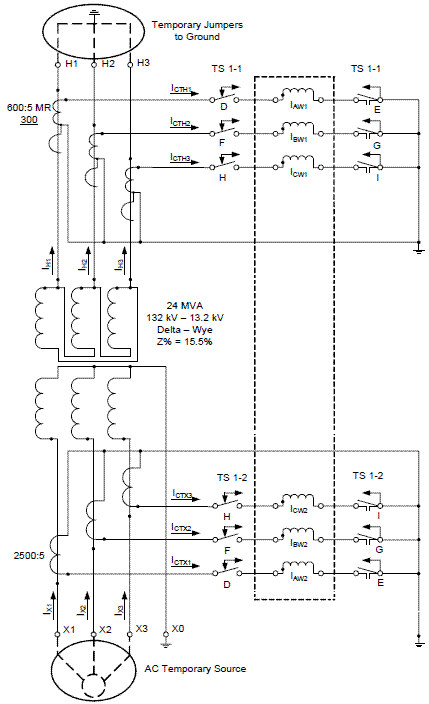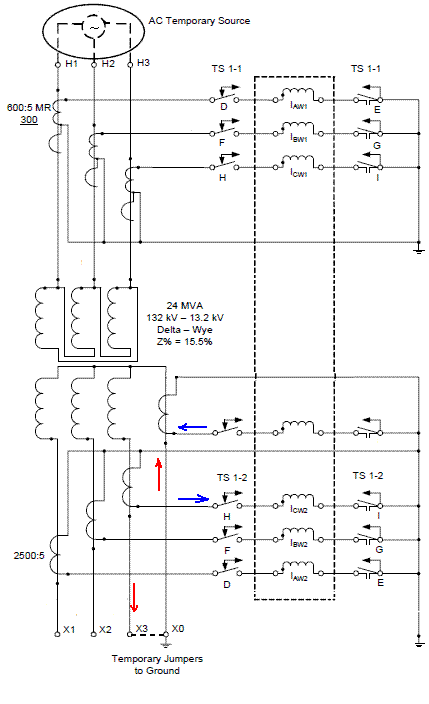- This topic has 1 reply, 1 voice, and was last updated 2 years, 11 months ago by .
-
Topic
-
How can be verified the transformer differential relay connections to CTs and be sure correct CT polarity in commissioning stage?
How can be verified the transformer differential relay connections to CTs and be sure correct CT polarity in commissioning stage?
Viewing 1 replies (of 1 total)
Viewing 1 replies (of 1 total)
- You must be logged in to reply to this topic.

 Through this procedure, we can check the following: – The phase rotation and angle of the currents – Secondary current magnitudes – The relationship of the high-side currents to the low side currents – The operate or differential current (should be nearly zero) For the transformer shown in Figure, given a 240 Vac source, we can calculate expected relay currents (magnitude and angle). Using relay metering data, we then observe the measured currents. If the measured (actual) currents do not match the calculated (expected) currents and/or we observe differential current, we must perform troubleshooting to systematically check CT wiring, connections, and relay settings to correct the discrepancy. For REF protection test the following diagram can be used.
Through this procedure, we can check the following: – The phase rotation and angle of the currents – Secondary current magnitudes – The relationship of the high-side currents to the low side currents – The operate or differential current (should be nearly zero) For the transformer shown in Figure, given a 240 Vac source, we can calculate expected relay currents (magnitude and angle). Using relay metering data, we then observe the measured currents. If the measured (actual) currents do not match the calculated (expected) currents and/or we observe differential current, we must perform troubleshooting to systematically check CT wiring, connections, and relay settings to correct the discrepancy. For REF protection test the following diagram can be used. 